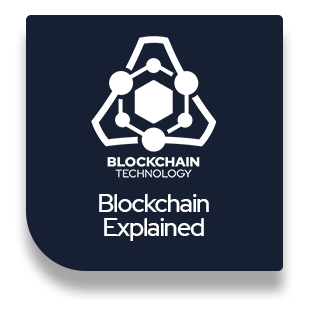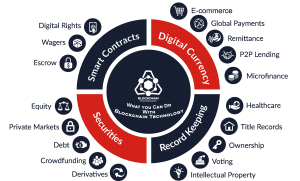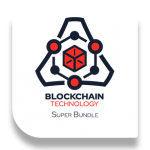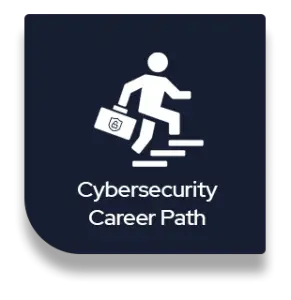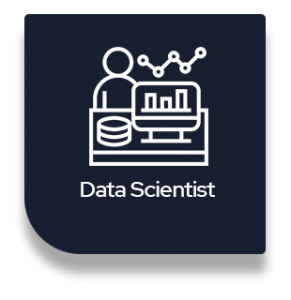Blockchain Technology – If you have been following banking, investing, or cryptocurrency over the last ten years, you may have heard the term “blockchain,” the record-keeping technology behind the Bitcoin network.
KEY TAKEAWAYS
- Blockchain is a specific type of database.
- It differs from a typical database in storing information; blockchains store data in blocks that are then chained together.
- As new data comes in, it is entered into a new block. Once the block is filled with data, it is chained onto the previous block, chaining it together in chronological order.
- Different types of information can be stored on a blockchain, but the most common use has been as a ledger for transactions.
- In Bitcoin’s case, blockchain is used in a decentralized way so that no single person or group has control—instead, all users collectively retain control.
- Decentralized blockchains are immutable, which means that the data entered is irreversible. For Bitcoin, this means that transactions are permanently recorded and viewable to anyone.
What is Blockchain?
Blockchain seems complicated, and it definitely can be, but its core concept is quite simple. A blockchain is a type of database. So, to understand blockchain, it helps first understand what a database is.
A database is a collection of information stored electronically on a computer system. Data in databases is typically structured in table format to simplify searching and filtering for specific details. So what is the difference between using a spreadsheet to store data rather than a database?
Spreadsheets are designed for one person, or a small group of people, to store and access limited amounts of information. In contrast, a database is intended to house significantly more significant amounts of information that can be accessed, filtered, and manipulated quickly and easily by any number of users at once.
Large databases achieve this by housing data on servers made of powerful computers. These servers can sometimes be built using hundreds or thousands of computers to have the computational power and storage capacity necessary for many users to access the database simultaneously. While a spreadsheet or database may be accessible to any number of people, it is often owned by a business and managed by an appointed individual who has complete control over how it works and its data.
So how does a blockchain differ from a database?
Storage Structure
One key difference between a typical database and a blockchain is how the data is structured. A blockchain collects information together in groups, also known as blocks, that hold sets of information. Blocks have specific storage capacities and, when filled, are chained onto the previously served block, forming a chain of data known as the “blockchain.” All new information that follows that freshly added block is compiled into a newly formed block that will be added to the chain once filled.
A database structures its data into tables, whereas a blockchain, like its name implies, structures its data into chunks (blocks) chained together. This makes it so that all blockchains are databases, but not all databases are blockchains. This system also inherently makes an irreversible timeline of data when implemented in a decentralized nature. When a block is filled, it is set in stone and becomes a part of this timeline. Each block in the chain is given an exact timestamp when it is added to the chain.
Decentralization
For understanding blockchain, it is instructive to view it in how Bitcoin has implemented it. Like a database, Bitcoin needs a collection of computers to store its blockchain. For Bitcoin, this blockchain is just a specific type of database that stores every Bitcoin transaction ever made. In Bitcoin’s case, and unlike most databases, these computers are not all under one roof. Instead, each computer or group of computers is operated by a unique individual or group of individuals.
Imagine that a company owns a server comprised of 10,000 computers with a database holding all of its client’s account information. In addition, this company has a warehouse containing all of these computers under one roof. It has complete control of each of these computers and all the information contained within them. Similarly, Bitcoin consists of thousands of computers. Still, each computer or group of computers that hold its blockchain is in a different geographic location, and they are all operated by separate individuals or groups of people. These computers that makeup Bitcoin’s network are called nodes.
In this model, Bitcoin’s blockchain is used in a decentralized way. However, private, centralized blockchains, where the computers that make up its network are owned and operated by a single entity, exist.
In a blockchain, each node has a complete record of the data that has been stored on the blockchain since its inception. For Bitcoin, the information is the entire history of all Bitcoin transactions. Therefore, if one node has an error in its data, it can use the thousands of other nodes as a reference point to correct itself. This way, no one node within the network can alter information held within it. Because of this, the history of transactions in each block that make up Bitcoin’s blockchain is irreversible.
If one user tampers with Bitcoin’s record of transactions, all other nodes would cross-reference each other and quickly pinpoint the node with the incorrect information. This system helps to establish an exact and transparent order of events. For Bitcoin, this information is a list of transactions. Still, it is also possible for a blockchain to hold various details like legal contracts, state identifications, or a company’s product inventory.
To change how that system works or the information stored within it, a majority of the decentralized network’s computing power would need to agree on said changes. This ensures that whatever changes do occur are in the best interests of the majority.
Bitcoin vs. Blockchain
The goal of blockchain is to allow digital information to be recorded and distributed but not edited. Blockchain technology was first outlined in 1991 by Stuart Haber and W. Scott Stornetta, two researchers who wanted to implement a system where document timestamps could not be tampered with. But it wasn’t until almost two decades later, with the launch of Bitcoin in January 2009, that blockchain had its first real-world application.
The Bitcoin protocol is built on a blockchain. In a research paper introducing the digital currency, Bitcoin’s pseudonymous creator, Satoshi Nakamoto, referred to it as “a new electronic cash system that’s fully peer-to-peer, with no trusted third party.”
The key thing to understand here is that Bitcoin merely uses blockchain to record a ledger of payments transparently. Still, blockchain can, in theory, be used to record any number of data points immutably. As discussed above, this could be in the form of transactions, votes in an election, product inventories, state identifications, deeds to homes, and much more.
Currently, there is a wide variety of blockchain-based projects looking to implement blockchain to help society other than just recording transactions. One good example is that of blockchain being used as a way to vote in democratic elections. However, the nature of blockchain’s immutability means that fraudulent voting would become far more difficult to occur.
For example, a voting system could work such that each citizen of a country would be issued a single cryptocurrency or token. Each candidate would then be given a specific wallet address, and the voters would send their token or crypto to whichever candidate’s address they wish to vote for. The transparent and traceable nature of blockchain would eliminate the need for human vote counting and the ability of bad actors to tamper with physical ballots.
How is Blockchain Used?
As we now know, blocks on Bitcoin’s blockchain store data about monetary transactions. But it turns out that blockchain is a reliable way of storing data about other types of transactions.
Some companies that have already incorporated blockchain include Walmart, Pfizer, AIG, Siemens, Unilever, and a host of others. For example, IBM has created its Food Trust blockchain1 to trace food products’ journey to get to its locations.
Why do this? The food industry has seen countless outbreaks of e Coli, salmonella, listeria, and hazardous materials being accidentally introduced to foods. In the past, it has taken weeks to find the source of these outbreaks or the cause of sickness from what people are eating.
Using blockchain gives brands the ability to track a food product’s route from its origin, through each stop it makes, and finally, it’s delivery. So if food is contaminated, then it can be traced back through each visit to its origin. Not only that, but these companies can also now see everything else they may have come in contact with, allowing the identification of the problem to occur far sooner, potentially saving lives. This is one example of blockchains in practice, but there are many other forms of blockchain implementation.
Banking and Finance
Perhaps no industry stands to benefit from integrating blockchain into its business operations more than banking. But, unfortunately, financial institutions only operate during business hours, five days a week. That means if you try to deposit a check on Friday at 6 p.m., you will likely have to wait until Monday morning to see that money hit your account. Furthermore, even if you make your deposit during business hours, the transaction can still take one to three days to verify due to the sheer volume of transactions banks need to settle. Blockchain, on the other hand, never sleeps.
By integrating blockchain into banks, consumers can see their transactions processed in as little as 10 minutes, two the time it takes to add a block to the blockchain, regardless of holidays or the time of day or week. With blockchain, banks also have the opportunity to exchange funds between institutions more quickly and securely. For example, in the stock trading business, the settlement and clearing process can take up to three days (or longer, if trading internationally), meaning that the money and shares are frozen for that period.
Given the size of the sums involved, even the few days that the money is in transit can carry high costs and risks for banks. European bank Santander and its research partners put the potential savings at $15 billion to $20 billion a year.3 Capgemini, a French consultancy, estimates that consumers could save up to $16 billion in banking and insurance fees each year4 through blockchain-based applications.
Currency
Blockchain forms the bedrock for cryptocurrencies like Bitcoin. The Federal Reserve controls the U.S. dollar. Under this central authority system, a user’s data and currency are technically at the whim of their bank or government. If a user’s bank is hacked, the client’s private information is at risk. If the client’s bank collapses or they live in a country with an unstable government, the value of their currency may be at risk. In 2008, some banks that ran out of money were bailed out partially using taxpayer money. These are the worries out of which Bitcoin was first conceived and developed.
By spreading its operations across a network of computers, blockchain allows Bitcoin and other cryptocurrencies to operate without the need for a central authority. This not only reduces risk but also eliminates many of the processing and transaction fees. It can also give countries with unstable currencies or financial infrastructures a more stable currency with more applications and a more comprehensive network of individuals and institutions they can do business with, both domestically and internationally.
Using cryptocurrency wallets for savings accounts or as a means of payment is especially profound for those with no state identification. Some countries may be war-torn or have governments that lack any actual infrastructure to provide identification. Citizens of such countries may not have access to savings or brokerage accounts and, therefore, no way to store wealth safely.
Healthcare
Health care providers can leverage blockchain to store their patients’ medical records securely. For example, when a medical record is generated and signed, it can be written into the blockchain, which provides patients with proof and confidence that the record cannot be changed. In addition, these personal health records could be encoded and stored on the blockchain with a private key so that they are only accessible by specific individuals, thereby ensuring privacy.
Records of Property
If you have ever spent time in your local Recorder’s Office, you will know that the process of recording property rights is both burdensome and inefficient. Today, a physical deed must be delivered to a government employee at the local recording office, where it is manually entered into the county’s central database and general index. Then, in the case of a property dispute, claims to the property must be reconciled with the broad index.
This process is not just costly and time-consuming—it is also riddled with human error, where each inaccuracy makes tracking property ownership less efficient. Blockchain can eliminate the need to scan documents and track down physical files in a local recording office. If property ownership is stored and verified on the blockchain, owners can trust that their deed is accurate and permanently recorded.
In war-torn countries or areas with little to no government or financial infrastructure and indeed no “Recorder’s Office,” it can be nearly impossible to prove property ownership. However, if a group of people living in such an area can leverage blockchain, transparent and clear timelines of property owners could be established.
Smart Contracts
A smart contract is a computer code built into the blockchain to facilitate, verify, or negotiate a contract agreement. Smart contracts operate under a set of conditions that users agree to. When those conditions are met, the terms of the agreement are automatically carried out.
Say, for example, a potential tenant would like to lease an apartment using a smart contract. The landlord agrees to give the tenant the door code to the apartment as soon as the tenant pays the security deposit. Both the tenant and the landlord would send their respective portions of the deal to the smart contract, which would hold onto and automatically exchange the door code for the security deposit on the date the lease begins. The smart contract refunds the security deposit if the landlord doesn’t supply the door code by the lease date. This would eliminate the fees and processes typically associated with using a notary, third-party mediator, or attornies.
Supply Chains
As in the IBM Food Trust example, suppliers can use blockchain to record the origins of their purchased materials. This would allow companies to verify the authenticity of their products, along with such standard labels as “Organic,” “Local,” and “Fair Trade.”
As reported by Forbes, the food industry is increasingly adopting the use of blockchain to track the path and safety of food throughout the farm-to-user journey.
Voting
As mentioned, blockchain could be used to facilitate a modern voting system. Voting with blockchain carries the potential to eliminate election fraud and boost voter turnout, as was tested in the November 2018 midterm elections in West Virginia. Using blockchain in this way would make votes nearly impossible to tamper with. The blockchain protocol would also maintain transparency in the electoral process, reducing the personnel needed to conduct an election and providing officials with nearly instant results. This would eliminate the need for recounts or any real concern that fraud might threaten the election.
Advantages of Blockchain
Accuracy of the Chain
A network approves transactions on the blockchain network of thousands of computers. This removes almost all human involvement in the verification process, resulting in less human error and an accurate record of information. Furthermore, even if a computer on the network were to make a computational mistake, the error would only be made to one copy of the blockchain. For that error to spread to the rest of the blockchain, it would need to be made by at least 51% of the network’s computers—a near impossibility for a large and growing network the size of Bitcoin’s.
Cost Reductions
Typically, consumers pay a bank to verify a transaction, a notary to sign a document, or a minister to perform a marriage. Blockchain eliminates the need for third-party verification and, with it, their associated costs. Business owners incur a small fee whenever they accept payments using credit cards, for example, because banks and payment processing companies have to process those transactions. Bitcoin, on the other hand, does not have a central authority and has limited transaction fees.
Decentralization
Blockchain does not store any of its information in a central location. Instead, the blockchain is copied and spread across a network of computers. Whenever a new block is added to the blockchain, every computer on the network updates its blockchain to reflect the change. By spreading that information across a network, rather than storing it in one central database, blockchain becomes more difficult to tamper with. For example, if a copy of the blockchain fell into the hands of a hacker, only a single copy of the information, rather than the entire network, would be compromised.
Efficient Transactions
Transactions placed through a central authority can take up to a few days to settle. If you attempt to deposit a check on Friday evening, for example, you may not actually see funds in your account until Monday morning. Whereas financial institutions operate during business hours, five days a week, blockchain is working 24 hours a day, seven days a week, and 365 days a year. As a result, transactions can be completed in as little as ten minutes and can be considered secure after just a few hours. This is particularly useful for cross-border trades, which usually take much longer because of time-zone issues and the fact that all parties must confirm payment processing.
Private Transactions
Many blockchain networks operate as public databases, meaning that anyone with an internet connection can view a list of the network’s transaction history. Although users can access details about transactions, they cannot access identifying information about the users making those transactions. As a result, it is a common misperception that blockchain networks like bitcoin are anonymous when they are only confidential.
When users make public transactions, their unique code called a public key is recorded on the blockchain rather than their personal information. So, for example, if a person has made a Bitcoin purchase on an exchange that requires identification then the person’s identity is still linked to their blockchain address, but a transaction, even when tied to a person’s name, does not reveal any personal information.
Secure Transactions
Once a transaction is recorded, its authenticity must be verified by the blockchain network. Thousands of computers on the blockchain rush to confirm that the details of the purchase are correct. After a computer has validated the transaction, it is added to the blockchain block. Each block on the blockchain contains its own unique hash, along with the block’s unique hash before it. When the information on a block is edited in any way, that block’s hashcode changes—however, the hash code on the block after it would not. This discrepancy makes it extremely difficult for information on the blockchain to be changed without notice.
Transparency
Most blockchains are entirely open-source software. This means that anyone and everyone can view its code. This gives auditors the ability to review cryptocurrencies like Bitcoin for security. However, this also means no real authority on who controls Bitcoin’s code or how it is edited. Because of this, anyone can suggest changes or upgrades to the system. If a majority of the network users agree that the new version of the code with the upgrade is sound and worthwhile, then Bitcoin can be updated.
Banking the Unbanked
Perhaps the most profound facet of blockchain and Bitcoin is the ability for anyone, regardless of ethnicity, gender, or cultural background, to use it. According to the world bank, nearly 2 billion adults do not have bank accounts or any means of storing their money or wealth.5 Nearly all of these individuals live in developing countries where the economy is in its infancy and entirely dependent on cash.
These people often earn little money that is paid in physical cash. They then need to store this physical cash in hidden locations in their homes or places of living, leaving them subject to robbery or unnecessary violence. Keys to a bitcoin wallet can be stored on a piece of paper, a cheap cell phone, or even memorized if necessary. Likely, these options are more easily hidden than a small pile of cash under a mattress for most people.
Blockchains of the future are also looking for solutions to be a unit of account for wealth storage and store medical records, property rights, and a variety of other legal contracts.
Disadvantages of Blockchain
While there are significant upsides to the blockchain, there are also significant challenges to its adoption. The roadblocks to the application of blockchain technology today are not just technical. For the most part, the real challenges are political and regulatory, to say nothing of the thousands of hours (read: money) of custom software design and back-end programming required to integrate blockchain into current business networks. Here are some of the challenges standing in the way of widespread blockchain adoption.
Technology Cost
Although blockchain can save users money on transaction fees, the technology is far from free. The “proof of work” system that bitcoin uses to validate transactions, for example, consumes vast amounts of computational power. In the real world, the power from the millions of computers on the bitcoin network is close to what Denmark consumes annually. Assuming electricity costs of $0.03~$0.05 per kilowatt-hour, mining costs exclusive of hardware expenses are about $5,000~$7,000 per coin.10
Despite the costs of mining bitcoin, users continue to drive up their electricity bills to validate transactions on the blockchain. That’s because when miners add a block to the bitcoin blockchain, they are rewarded with enough bitcoin to make their time and energy worthwhile. However, miners will need to be paid or otherwise incentivized to validate transactions when it comes to blockchains that do not use cryptocurrency.
Some solutions to these issues are beginning to arise. For example, bitcoin mining farms have been set up to use solar power, excess natural gas from fracking sites, or power from wind farms.
Speed Inefficiency
Bitcoin is a perfect case study for the possible inefficiencies of blockchain. Bitcoin’s “proof of work” system takes about ten minutes to add a new block to the blockchain. At that rate, it’s estimated that the blockchain network can only manage about seven transactions per second (TPS). Although other cryptocurrencies such as Ethereum perform better than bitcoin, they are still limited by blockchain. Legacy brand Visa, for context, can process 24,000 TPS.
Solutions to this issue have been in development for years. There are currently blockchains that are boasting over 30,000 transactions per second.
Illegal Activity
While confidentiality on the blockchain network protects users from hacks and preserves privacy, it also allows for illegal trading and activity on the blockchain network. The most cited example of blockchain being used for illicit transactions is probably the Silk Road, an online “dark web” drug marketplace operating from February 2011 until October 2013 when it was shut down by the FBI.6
The website allowed users to browse without being tracked using the Tor browser and make illegal purchases in Bitcoin or other cryptocurrencies. Current U.S. regulations require financial service providers to obtain information about their customers when they open an account, verify the identity of each customer, and confirm that customers do not appear on any list of known or suspected terrorist organizations. This system can be seen as both a pro and a con. It gives anyone access to financial accounts but also allows criminals to transact more efficiently. Many have argued that the good uses of crypto, like banking the unbanked world, outweigh the bad benefits of cryptocurrency, especially when most illegal activity is still accomplished through untraceable cash.
Regulation
Many in the crypto space have expressed concerns about government regulation over cryptocurrencies. While it is getting increasingly tricky and near impossible to end something like Bitcoin as its decentralized network grows, governments could theoretically make it illegal to own cryptocurrencies or participate in their networks.
Over time this concern has grown smaller as large companies like PayPal begin to allow the ownership and use of cryptocurrencies on their platform.
What’s Next for Blockchain?
First proposed as a research project in 1991, 7 blockchains are comfortably settling into their late twenties. But, like most millennials its age, blockchain has seen its fair share of public scrutiny over the last two decades, with businesses worldwide speculating about what the technology is capable of and where it’s headed in the years to come.
With many practical applications for the technology already being implemented and explored, blockchain is finally making a name for itself at age twenty-seven, in no small part because of bitcoin and cryptocurrency. As a buzzword on the tongue of every investor in the nation, blockchain stands to make business and government operations more accurate, efficient, secure, and cheap with fewer intermediaries.
As we prepare to head into the third decade of blockchain, it’s no longer a question of “if” legacy companies will catch on to the technology—it’s a question of “when.”
Learn More About Blockchain
Skilldacity’s Blockchain Training Bundle
